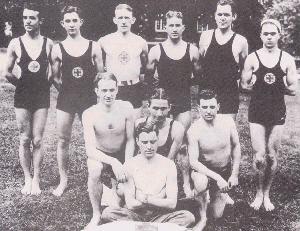Kris Alexander of the grossly misnamed Alexander the Average  had, some months ago, proposed a Civilian Reserve Corps.
Link to his PowerPoint presentation here.Â
We’re not sure how much this would vary from the original national CERT concept – in which (1) CERT teams would be encouraged to have advanced training, and (2) teams in non-affected areas would be transported to assist in affected areas.
Apparently, the President likes this idea – so much that he proposed it in his State of the Union address. Which – we must admit – we missed. Alexander suspects, in a piece entitled “The President Stole My Idea”), what Mark Twain called “unconscious appropriation.”
Nothing is ours but our language, our phrasing. If a man takes that from me (knowingly, purposely) he is a thief. If he takes it unconsciously–snaking it out of some old secluded corner of his memory, and mistaking it for a new birth instead of a mummy — he is no thief, and no man has a case against him.
Unconscious appropriation is utterly common; it is not plagiarism and is no crime; but conscious appropriation, i. e., plagiarism, is as rare as parricide. Of course there are plagiarists in the world–I am not disputing that–but bless you, they are few and far between. These notions of mine are not guesses; they are the outcome of twenty years of thought and observation upon this subject.
– Mark Twain (Samuel Clemens), Letter to Robert Burdette, circa 4/19/1890. Link here.
Our question – and forgive us – we haven’t finished the first cup of coffee yet – is – what’s happening with this fine idea?
In the meantime – Popular Logistics takes this opportunity to, once again, encourage those just beginning to think of these issues to do the following:
If you’ve concluded you need to act, go to Three Steps.
If you still need a little bit of persuasion, read Irwin Redlener’s book (cover in our left sidebar, if the CSS code is still working), and Stuart Brand’s account of the aftermath of the 1989 San Francisco earthquake. Link here.Â
Via WorldChanging.







